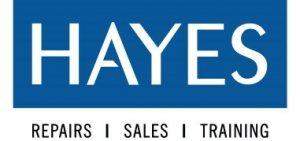Droplet and Airborne Transmission Precautions for Dental Professionals
Standard Precautions are the minimum infection prevention practices that apply to all patient care, regardless of suspected or confirmed infection status. These practices protect both patients and dental professionals from spreading infections among one another in any setting where dental care is being delivered.
According to ADA, Standard precautions include the following:
- hand hygiene, as consistent with the 5 moments for hand hygiene
- the use of appropriate personal protective equipment
- the safe use and disposal of sharps
- routine environmental cleaning
- reprocessing of reusable medical equipment and instruments
- respiratory hygiene and cough etiquette
- aseptic technique
- waste management
- appropriate handling of linen
Droplet Transmission Precautions
Droplet transmission occurs when you are in close contact with someone who is coughing or sneezing and they may have potentially infectious respiratory droplets. Droplet precautions are required in places where a cough or sneeze is transmitted by direct contact with mucosa (eyes, nose) and indirectly from hands. Droplets can be transferred to surfaces within 1 meter that may also harbor infectious agents which require droplet precaution such as the seasonal flu virus or new viruses such as COVID-19. You could also get infected by touching items around a sick individual like their tissue box and hand sanitizer if those things were not properly disinfected after being touched before.
Droplets present a high risk of transmission for viruses such as influenza, adenovirus, SARS and SARS-COV-2. Patients should be kept 3 feet from other patients. In order to ensure that droplet contact is avoided in the waiting room, Health Care Providers such that of dental professionals, are advised by OSHA guidelines to wear surgical masks at all times while within 3 feet of an infected person or any bodily fluids from said individual.
Droplet precautions require barrier use, surgical mask, patient placement, and surface decontamination. These precautions include (1) the patient is seen as the last of patients for that day; (2) staff providing treatment have to be immunized against currently circulating influenza strains;(3) pre-procedural mouth rinse used – also called a “spit bucket”.
Frequent hand washing or alcohol gel can then be applied before proceeding with dental procedures on these previously contaminated surfaces. In general, there will be few situations in which droplets might enter your work area where you would need to apply any additional protections.
Airborne Transmission Precautions
Airborne precautions are intended to prevent the transmission of pathogenic organisms by droplet nuclei. This is done through administrative controls, as well as environmental and respiratory-protection controls for more serious cases such as tuberculosis, measles, and chickenpox.
Administrative controls are necessary when you think a person may have an airborne infection. A high index of suspicion is essential for rapid implementation, so they can prevent or interrupt the transmission of airborne pathogens before it’s too late.
Airborne precautions are required to protect health care workers and patients who may be exposed to small infectious particles. Airborne precautions, such as wearing P2 (N95) surgical respirators, reduce the likelihood of transmitting microorganisms that remain infective over time or distance when suspended in air. These agents include measles, chickenpox (varicella), and and Mycobacterium tuberculosis, as well as novel respiratory pathogens such as H5N1 (avian) influenza, H7N9 influence, and coronavirus infections.
The CDC recommends that all dental settings, regardless of the level of care provided, should be equipped to observe Standard Precautions and other infection prevention recommendations. To book for an in-house or online training for you and your team visit our CDC Dental Guidelines and Infection Control page.
For other available training, you can also check the links below:
Hayes also specialize in instrument sharpening & repairs. Our experienced technicians have decades of experience working with all major brands of dental handpieces including:
A-dec | Beyes | Bien Air | Denticator | Hall | Henry Schein | Impact Air | Kavo | Lares | Midwest | Morita | Nobel Biocare | Nouvag | NSK | Patterson | Schein Master | Shamrock | Star | Strauman | Stryker | W&H | Young | American Eagle | HU Friedy | Nordent | PDT




